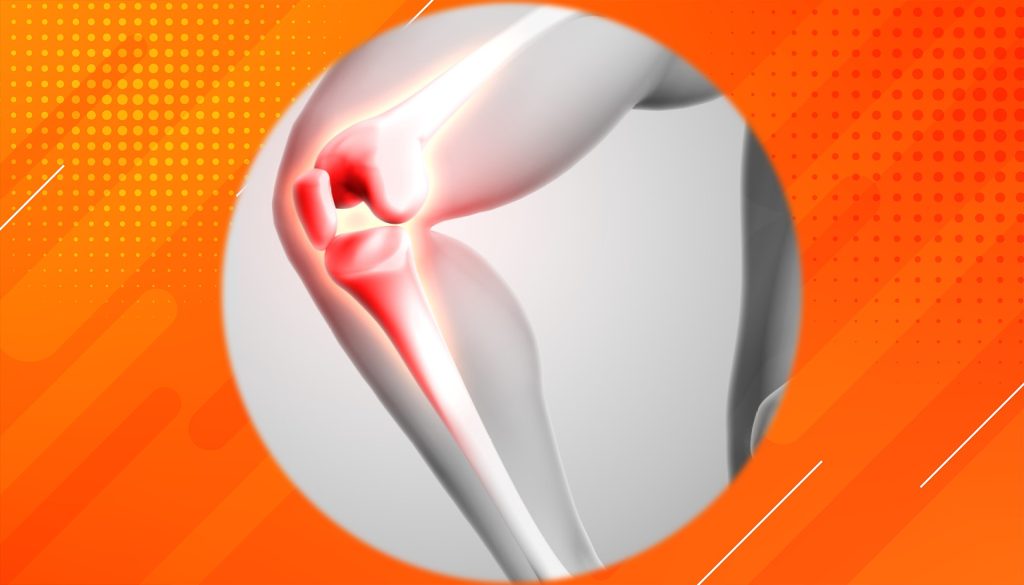Can Genetics Cause Knee Osteoarthritis Without Wear and Tear? Understanding the Roles of Heredity and Joint Mechanics

Is knee osteoarthritis only caused by aging and joint wear, or does genetics play a significant role too? This article explores the complex causes of knee osteoarthritis, highlighting the interplay between genetic predisposition and mechanical factors such as joint alignment and cartilage damage. Recent research reveals that genetics can increase susceptibility and influence disease progression, while biomechanics remain crucial in cartilage wear. Understanding both factors helps develop personalized prevention and treatment strategies—like early checkups, targeted exercise, and lifestyle changes—especially if there’s a family history. Discover how advances in genetic testing and proactive care may reshape the future of osteoarthritis management.
The Critical Role of ICD-10 Coding for Osteoarthritis of the Right Knee: Improving Diagnosis and Patient Care

Accurate ICD-10 coding for right knee osteoarthritis is essential for quality healthcare, supporting clear communication, precise diagnosis, and effective treatment planning. This article explains the importance of using the correct ICD-10 code, detailing how it enables personalized care, improves insurance and billing processes, and empowers medical research with reliable data. With knee osteoarthritis prevalent among older adults, correct coding ensures optimal patient outcomes and contributes to robust healthcare statistics. The article also highlights evolving coding standards, including the transition to ICD-11, and emphasizes the impact of coding on both individual patient care and broader public health monitoring.
The Biomechanics of Knee Joint Anatomy: Unraveling Structural Adaptations in Knee Osteoarthritis

Discover how knee osteoarthritis develops from a biomechanical perspective in this comprehensive overview. Learn how the knee’s structure, cartilage, ligaments, and biomechanics contribute to the progression of osteoarthritis, leading to pain, stiffness, and mobility issues. This article explains the cycle of cartilage breakdown, bone changes, and joint adaptation, while highlighting key risk factors like poor alignment and age-related degeneration. Understand the impact of targeted treatments, including physical therapy, braces, and surgical options, designed to reduce stress on the knee and improve function. Explore the future of osteoarthritis care with emerging therapies and technologies that promise better pain relief and mobility. Ideal for those seeking in-depth knowledge of knee osteoarthritis causes, biomechanics, and personalized treatment strategies.
Innovative Synergies: How Combined PRP and Laser Therapy Are Revolutionizing Gonarthrosis Management

Discover how combining Platelet-Rich Plasma (PRP) and laser therapy offers a breakthrough approach to treating gonarthrosis, also known as knee osteoarthritis. This innovative dual-action strategy targets pain, inflammation, and cartilage repair, providing relief and improved mobility for patients, particularly those over age 50. Unlike traditional treatments that only manage symptoms, PRP and laser therapy work together to heal the joint and restore function—potentially delaying or even avoiding surgery. Learn why this combined therapy is gaining attention among doctors and patients, who benefit from personalized, less invasive treatment options for knee osteoarthritis. Find out if PRP and laser therapy could be right for your knee health.
Does Knee Osteoarthritis Spread? Separating Fact from Fiction

Knee osteoarthritis is a leading cause of joint pain and mobility issues worldwide. Contrary to popular belief, osteoarthritis does not “spread” from one joint to another like an infection. Instead, it develops in each joint independently due to factors such as aging, mechanical stress, genetics, and lifestyle. Research shows that while osteoarthritis can affect multiple joints, this occurs because of shared risk factors—not because the condition moves between joints. Understanding this distinction helps patients focus on proven strategies to manage knee osteoarthritis, including maintaining a healthy weight, engaging in physical therapy, and early intervention. Debunking the spreading myth empowers individuals to make informed decisions for joint health and improve quality of life.
Reevaluating Knee Osteoarthritis: Could Autoimmunity Be the Missing Link?

Emerging research challenges the traditional view that knee osteoarthritis (OA) is solely a “wear and tear” condition, highlighting the immune system’s significant role in its progression. Elevated levels of inflammatory cytokines, autoantibodies, and immune cell activity in affected joints suggest that autoimmunity may contribute to cartilage loss and persistent inflammation. This immune involvement helps explain why some individuals experience severe OA despite minimal mechanical stress, and why conventional treatments sometimes fall short. Researchers are now investigating specific immune markers and exploring whether therapies targeting immune responses—similar to those used in rheumatoid arthritis—could benefit certain OA patients. As our understanding of knee OA evolves beyond mechanical damage to include autoimmune mechanisms, new diagnostic and treatment options may improve outcomes for millions. Learn more about how the immune system could be shaping the future of osteoarthritis management.
Bridging the Gap: How ICD-10 Coding Helps Manage Gout and Knee Osteoarthritis Together

Accurate ICD-10 coding plays a critical role in diagnosing and managing gout and knee osteoarthritis, conditions that often co-occur and can exacerbate each other. This article examines how precise disease coding supports early identification, integrated treatment plans, and better patient outcomes, especially among older adults with high osteoarthritis prevalence. By understanding the link between gout-induced inflammation and accelerated knee cartilage breakdown, healthcare providers can optimize interventions, reduce complications, and control healthcare costs. The article also highlights the challenges of coding overlapping joint diseases and underscores the need for ongoing provider education and multidisciplinary collaboration to improve joint health care.
Understanding How Biomechanical Factors Affect Balance in Bilateral Knee Osteoarthritis

Bilateral knee osteoarthritis is a common condition where cartilage deterioration in both knees leads to pain, stiffness, and significant balance problems, making daily activities difficult and increasing the risk of falls. This article explains how biomechanical changes—such as muscle weakness, poor proprioception, and joint instability—impact mobility and stability in affected individuals. Effective management focuses on physical therapy, strengthening exercises, balance training, weight control, and innovative treatments like virtual reality and electrical stimulation. Understanding these challenges is essential for developing personalized treatment plans that relieve pain, restore confidence, and enhance quality of life for those living with bilateral knee osteoarthritis.
Is Osteoarthritis Hereditary? Understanding the Genetic Links in Knee Osteoarthritis

Discover the hereditary factors behind knee osteoarthritis in this comprehensive guide. Learn how genetics, family history, and specific genes contribute to your risk of developing knee osteoarthritis, alongside lifestyle and environmental influences. Recent scientific findings reveal that while inherited genes play a role in cartilage health and inflammation, lifestyle choices like weight management and injury prevention are equally important. The article explores how genetic insights may soon lead to personalized prevention strategies and treatments, including exercise, medication, and even promising gene-based therapies. Stay informed about how balancing genetic and lifestyle factors can help protect your knees and improve long-term joint health.
Advancing Toward a Cure: Exploring Regenerative Treatments for Knee Osteoarthritis

Explore groundbreaking advances in knee osteoarthritis treatment, moving beyond symptom management to true joint repair. This article reviews the latest research on stem cell therapies, tissue engineering, and targeted medications that aim to regenerate cartilage, reduce inflammation, and potentially cure knee OA. Learn how innovative regenerative medicine offers new hope by addressing the root causes of osteoarthritis and restoring knee function. Stay updated on future therapeutic possibilities for millions suffering from knee pain and mobility issues, and discover how these developments are changing expectations for knee osteoarthritis outcomes.
